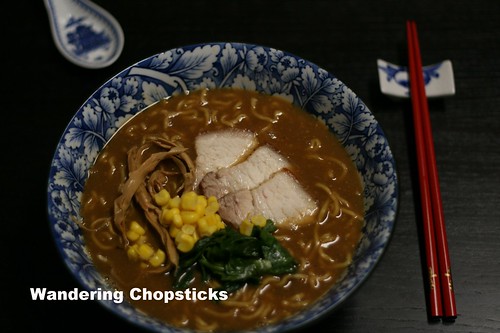
While my favorite ramen is tonkotsu, for that rich milky porky broth, it takes a lot of skill and labor to make. I'd rather go to Daikokuya Original Noodle and Rice Bowl - Monterey Park to get my fix. But chicken bone-based ramen with soy sauce and miso paste to add that oomph of flavor seemed much more doable.
This recipe isn't that different from my Torigara Shoyu (Japanese Soy Sauce Chicken) Ramen, except with the addition of miso paste, of course. You can add the miso paste at the end if you wish, but I added a large dollop while the broth was boiling to infuse more flavor. Unlike Pho Bo (Vietnamese Beef Noodle Soup), in which the broth is kept on low for clarity, the key to a good ramen broth is to keep the broth at a roiling boil to extract as much from the bones as possible. A thick, milky broth is a good thing when it comes to ramen.
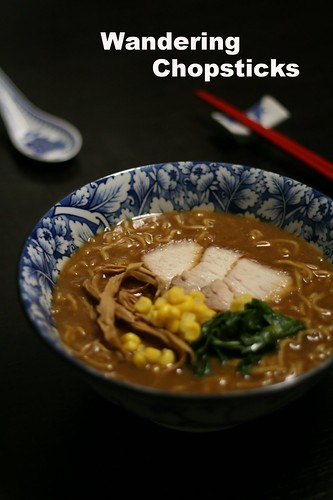
Torigara Shoyu Miso (Japanese Chicken Soy Sauce Bean Paste) Ramen
For about 6 to 8 servings, or a 7-quart stock pot, you'll need:
2 chicken carcasses
1 large onion, quartered
2 small apples, peeled and quarted
1 sheet Dashi Kombu (Japanese Kelp)
2 tsp dried small fish
2 tsp dried shrimp
1 tsp salt
1/4 cup soy sauce
1/4 cup mirin (Japanese rice wine)
2-inch knob ginger
2 tblsp white miso paste
1-lb package ramen noodles
Optional: For garnishes, hard-boiled eggs, shiitake mushrooms, bamboo shoots, corn, seaweed, butter, green onions, bean sprouts, etc.
Serve with Buta No Kakuni (Japanese Braised Pork or Tori No Nimono (Japanese Simmered Chicken)
Fill a 7-quart pot with about 5-quarts of water. Add in 2 chicken carcasses, 1 large onion, 2 small apples, 1 sheet dashi kombu (Japanese kelp), 2 tsp dried small fish, 2 tsp dried shrimp, 1 tsp salt, 1/4 cup soy sauce, 1/4 cup mirin (Japanese rice wine), and 2-inch knob ginger. Keep the whole mixture on medium-high for about 5 hours. The high temperature will help extract maximum flavor from the bones.

The Japanese kelp will help add a natural savoriness, but don't go overboard or the broth will taste fishy. Same goes for the tiny dried fish and shrimp added to the stock.
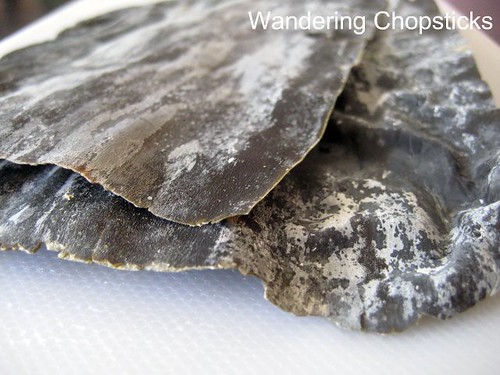
Add in 2 tblsps of white miso paste too.
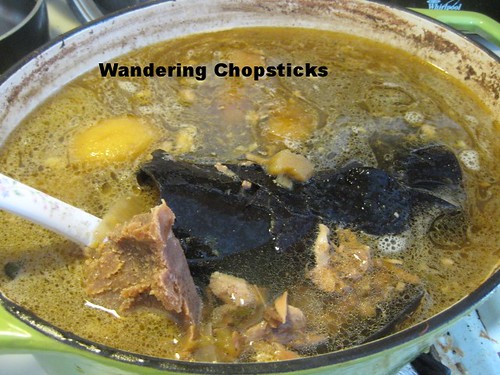
After about three hours, taste the stock and make adjustments if necessary.
At this point, make the Japanese braised pork belly or braised chicken if you'd like to serve either with the ramen.
After about five hours, your stock should be ready. Spoon out the bones and other ingredients.
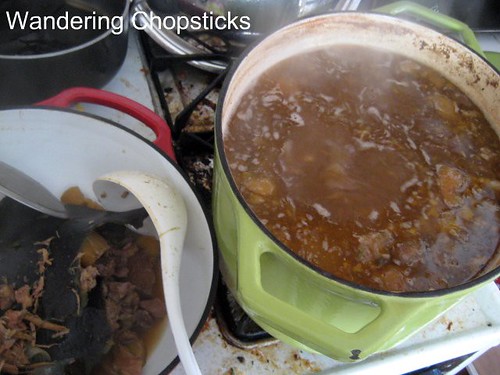
The ramen broth still isn't as clear as I'd like.

So I use my skimmer to clean up any stray large pieces.
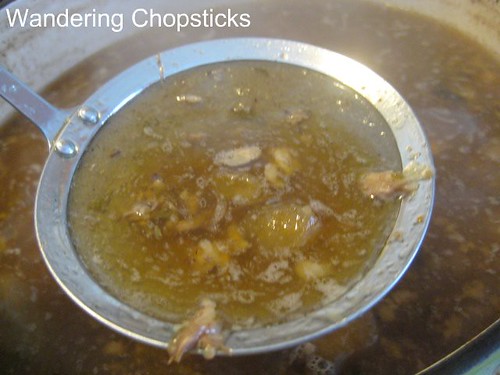
Finally, a nice clear broth.
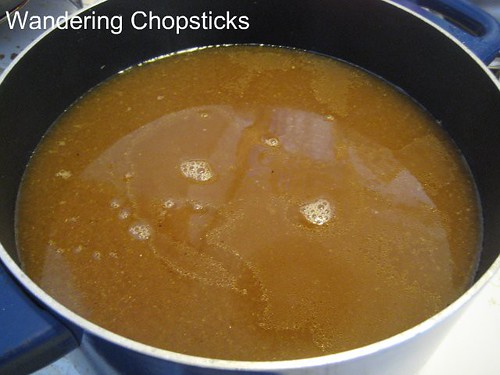
Boil and drain the ramen noodles.
Slice the meat.
Prepare the garnishes.

I served the Japanese soy sauce miso chicken ramen with slices of Japanese braised pork belly, bamboo shoots, corn, and spinach.
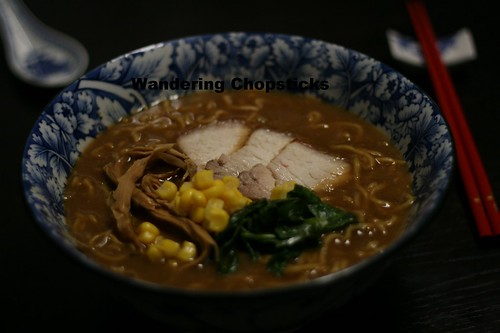
Add some fresh miso paste if you'd like, but the broth was perfect for me.
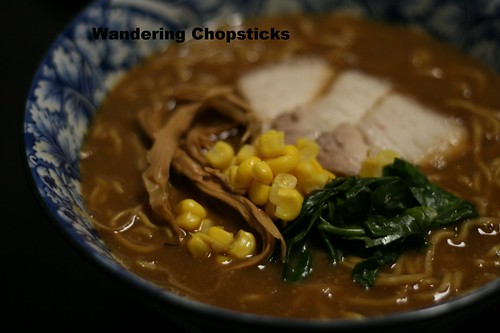
Enjoy!
Other ramen recipes:
Mapo Tofu Ramen
Shichimenchou (Japanese Turkey Bone) Ramen
Shio (Japanese Salt) Ramen
Torigara Shoyu (Japanese Soy Sauce Chicken) Ramen
*****
1 year ago today, Beverly Cleary Sculpture Garden - Grant Park - Portland - Oregon.
2 years ago today, Nubi Yogurt - San Gabriel.
3 years ago today, banh u nuoc tro (lye water dumplings) and banh ba trang (the Vietnamese pronunciation and spelling of Chinese bak chang (meat dumplings)) for Tet Nua Nam (Vietnamese half-new year which falls on the fifth day of the fifth month on the lunar calendar).
4 years ago today, the '88s graduated from high school and we all dined at Zen Buffet - San Gabriel.

No comments:
Post a Comment
Thank you for stopping by. I try to respond in a timely manner, but am not always able to do so. If you're awaiting a response, check the post in which the comment is made or click the "Notify me" option.
If you're not a blogger and you'd like to leave a comment, you can do so using your Google/Gmail account.
I welcome questions, discussions, and feedback, but please be mindful that this is my home online. I reserve the right to delete any comment that is anonymous or unknown, rude, promotional, or has a link.
Thank you for reading!